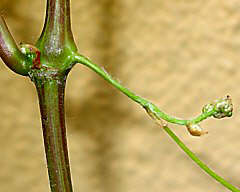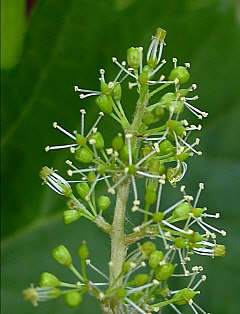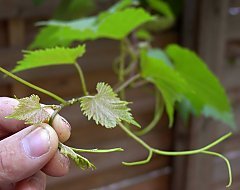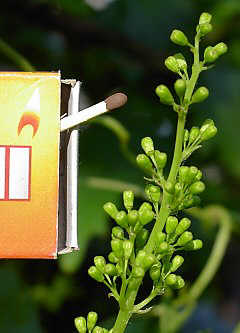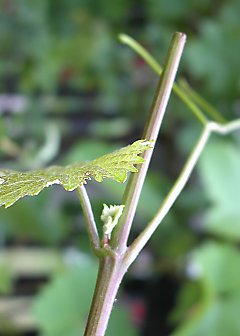Pinching Back Shoot Tips in Grapevines: Pruning in June
The major pruning of grapevines is carried out in winter. In early spring, shoot thinning (described separately) follows, and later, if required- summer pruning. In-between, during May/June, it may be necessary to pinch back shoot tips, but only if the vine is very vigorous or known as a variety with low fruitfulness. Pinching back shoot tips prevents the grapes from dropping off. This section covers what you need to know.
Very vigorous grapevines tend to produce extremely long shoots during the first years. However, such strong growth comes at the cost of the fruit -- often the flower buds fail to develop (Image 01), dry up before flowering (Image 02), and end up dropping off. By pinching back the shoot tips before flowering (Image 03), the sap flow is "dammed up," resulting in better flower development and pollination. However, even after flowering, some susceptible varieties -- especially after wet and cold weather -- can suffer the dreaded "coulure" or "shatter," whereby fruit will fail to set (reach maturity) and will fall off or "drizzle/drop down" (Image 05). Pinching back shoot tips, however, does have its drawbacks: once you start to pinch back or trim shoot tips on a very vigorous vine, you will be required to carry out summer pruning once or several times.
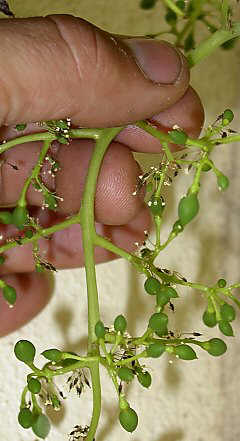
Image 05: It is quite normal for flowers to drop off during and shortly after the flowering period-- about 80% of all fertilised flowers are shed. For varieties with very large berries, such as "Theresa," it is particularly important that only a small number of berries develop, because too many berries will cause them to press against each other.

